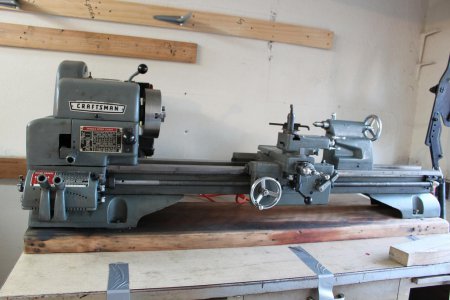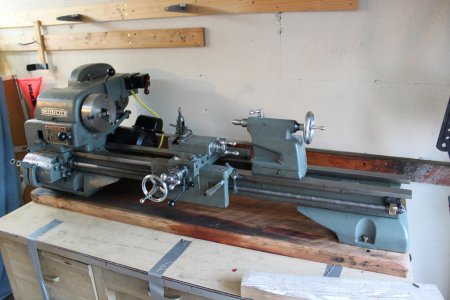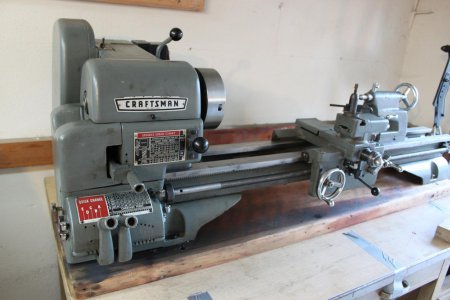Ryan,
OK. As the other thread just touched on, precision levels are a bit on the expensive side for something you may need to use only once in a decade.
On the collets, the hole through Atlas 12" spindles is only 25/32". So you won't be able to pass any of your tubes through the headstock. And the "native" collets for the machines, 3AT, have a capacity limit of 17/32". The largest size collet (and probably, for lathes, the most common) for which I know that you can buy closers to fit the Atlas is the 5C. It has a capacity limit of 1-1/16". So a 1" 5C collet will hold your 1" tubing. And you can pass the tubing through the collet and closer up against the spindle nose and be able to work on tubes up to about 3' long. You can also buy, for tube diameters larger than 1-1/16", what are called step collets, which have oversized heads that you can bore part way through. Max length that you can work on will be less than 3' by the length of the closer.
On the 5C collet closer, that I know of there have been two types made to fit the Atlas. Royal and someone else made a front mounted lever operated closer that are somewhere between uncommon and rare. But you might be able to find one of those used. Until recently, I had one of the Royal ones. Several Chinese companies are making the other type that is operated with a T-handle square nose key like a 3-jaw chuck. These are available from several US vendors and on eBay for typically between $180 and $350. The less expensive ones are usually sold as plain or flat back and you would have to make the back plate. Which you don't want to do. So be sure if you buy one that it comes with a back plate to fit a 1-1/2"-8 spindle nose.
On the steady rest, you aren't likely to find one for the 12" for under $100. The originals came in two styles. The early type (up through sometime in the 1960's) have a one-piece body that encircles about 250 degrees of the work piece. To load or unload them, you have to disturb the setup by retracting the top jaw or finger. Which is undesirable for several reasons. The late ones have a two-piece body. The top is hinged at the rear and can be opened without touching the jaw settings. There are several of the early type on eBay tonight but the only late type I see is an aftermarket unit. It looks well made and reasonably priced ($150) but unfortunately will not take original Atlas jaws. With the thin wall tubing you described, I would suggest a set of aftermarket ball bearing jaws. And the aftermarket steady rest listed doesn't look like it will take the roller jaws currently available.
There is one other hinged top steady rest on eBay tonight with the word "Atlas" in its title, but it won't fit any Atlas-Craftsman that I ever saw.
Robert D.







